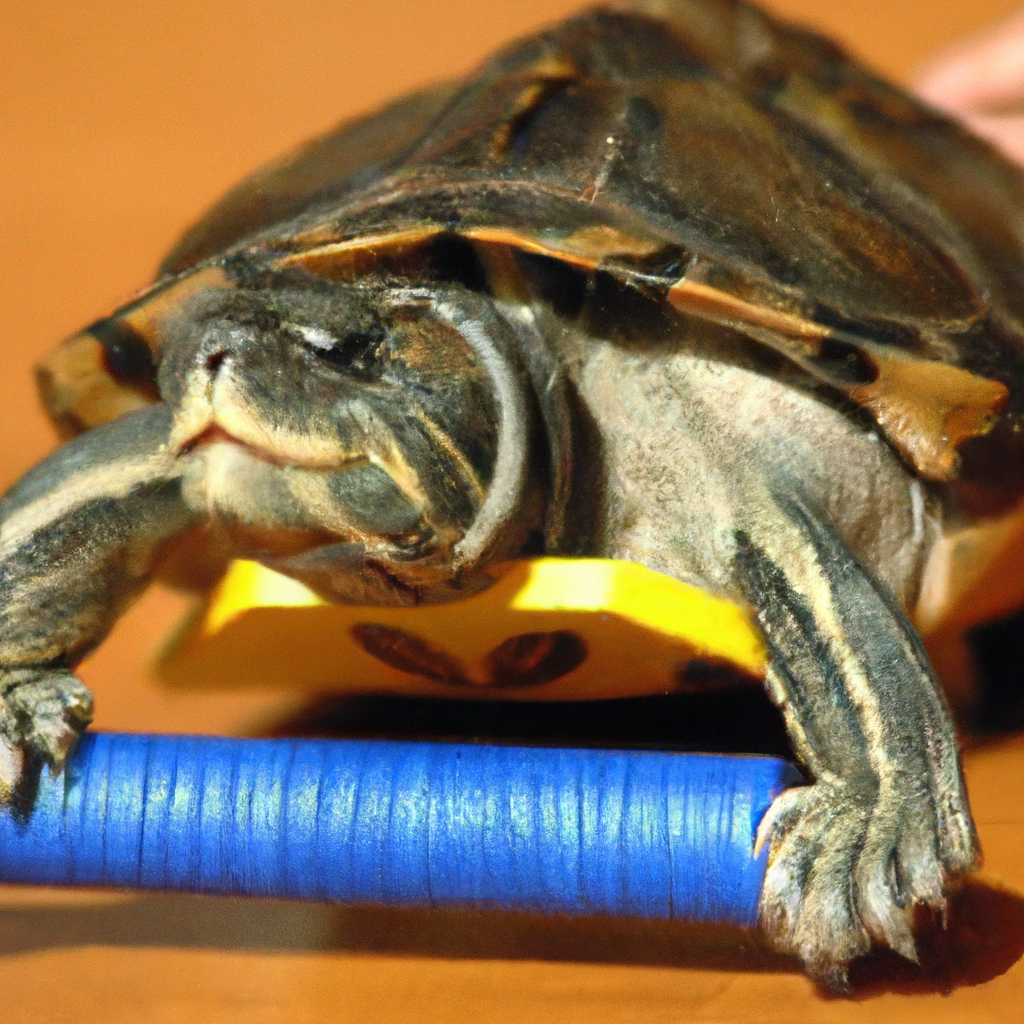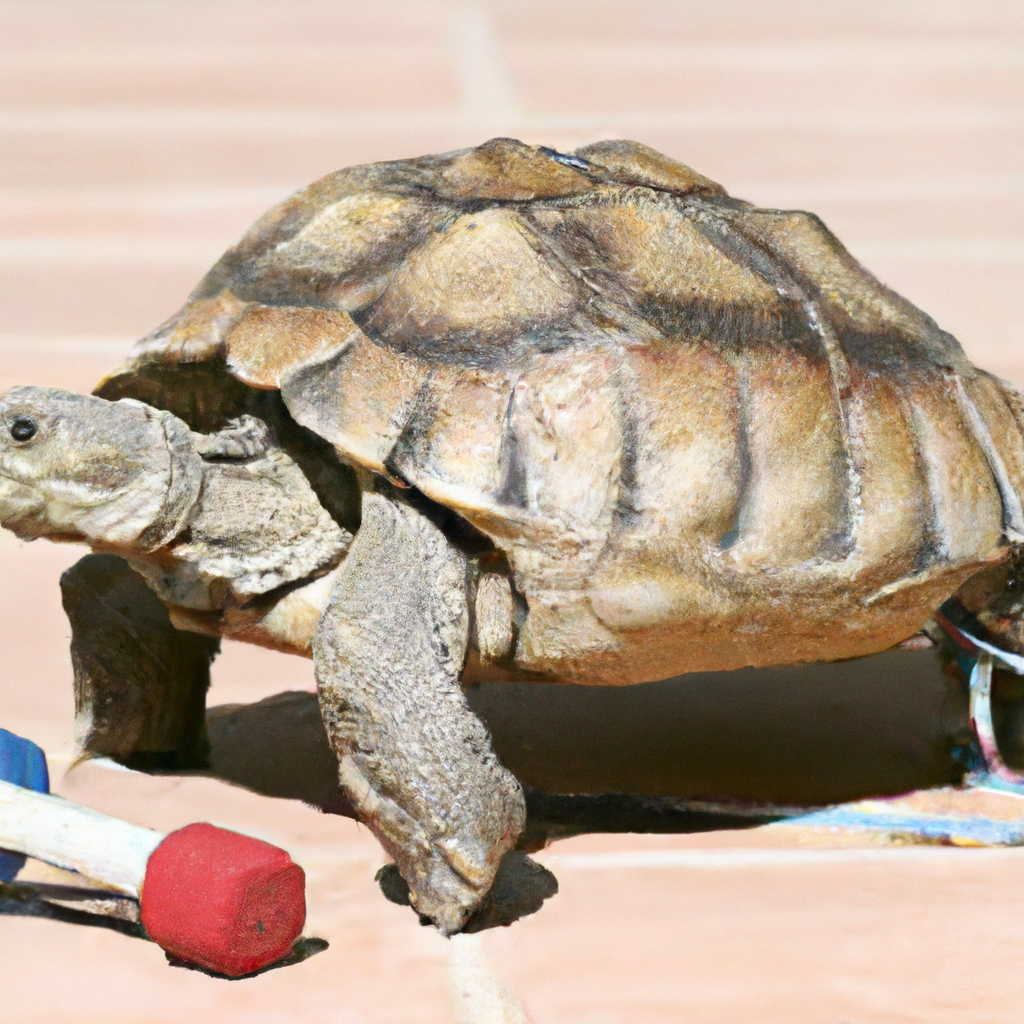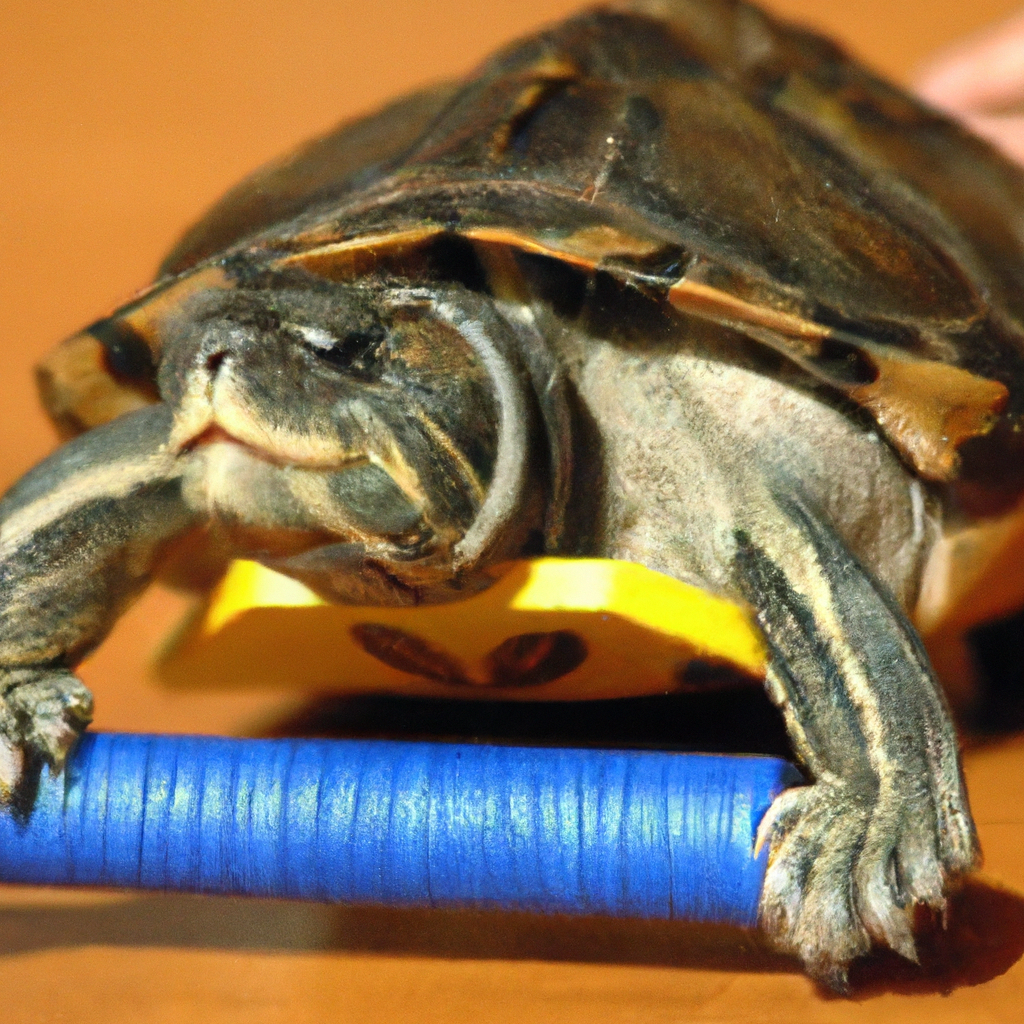Are you looking for ways to improve the physical and mental well-being of your turtles? Look no further! In this article, we will explore the benefits of turtle exercise and enrichment and how it can positively impact your shelled friends. From providing them with opportunities to explore and interact with their environment to promoting stronger muscles and a sharper mind, incorporating exercises and enrichment activities into your turtles’ daily routine can lead to happier and healthier lives. So, let’s dive in and discover the wonderful world of turtle exercise and enrichment!

Importance of Exercise for Turtles
Keeping turtles active and engaged is essential for their overall health and well-being. Exercise not only benefits their physical health but also stimulates their minds and prevents boredom in their daily routines. It is important to understand the importance of exercise for turtles and how it can positively impact their lives.
Benefits of Exercise for Turtles
-
Physical Fitness: Regular exercise helps turtles maintain a healthy weight, improves their muscle tone, and supports their cardiovascular health. It also enhances their metabolism, digestion, and overall physical fitness.
-
Mental Stimulation: Providing exercise opportunities for turtles helps keep their minds sharp and engaged. It prevents boredom, which can lead to behavioral issues and stress-related problems. Exercise stimulates their curiosity, promotes natural behaviors, and prevents mental stagnation.
-
Preventive Health: Regular exercise reduces the risk of health issues such as respiratory problems, shell deformities, and obesity. It also improves their immune system and promotes overall longevity in turtles.
-
Improved Mood and Well-being: Just like humans, exercise releases endorphins in turtles, which elevate their mood, reduce stress levels, and promote a sense of well-being. It helps them feel happier and content in their environment.
Common Exercise-Related Problems in Turtles
While exercise is important, it is crucial to be aware of potential problems that can arise if it is not implemented correctly. Some common exercise-related problems in turtles include:
-
Overexertion: Turtles may become exhausted or stressed if they are forced to exercise beyond their limits. It is important to provide opportunities for exercise that are suitable for their species, age, and overall health condition.
-
Inadequate Exercise: Lack of exercise can lead to obesity, weakened muscles, and diminished overall fitness. Turtles that do not receive enough exercise may become sedentary, which negatively impacts their physical and mental well-being.
-
Inappropriate Enclosures: A poorly designed or inadequate enclosure can restrict a turtle’s ability to exercise naturally. Limited space, lack of climbing surfaces, or insufficient access to swimming areas can hinder their exercise opportunities.
-
Lack of Mental Stimulation: A lack of mental stimulation can lead to boredom, depression, and behavioral problems in turtles. Exercise should not only focus on physical activity but also provide opportunities for mental enrichment.
To avoid these exercise-related problems, it is important to choose the right enclosure for turtles and provide appropriate exercise opportunities in a safe and stimulating environment.
Choosing the Right Enclosure for Exercise
Creating a suitable enclosure is key to promoting exercise and enrichment for your turtle. Here are some factors to consider when designing an enclosure for your turtle:
Appropriate Size of Enclosure
Turtles require ample space to explore, swim, climb, and exercise. A general rule of thumb is to provide at least 10 gallons of water per inch of the turtle’s shell length. Additionally, consider the turtle’s adult size as it will help determine the overall size of the enclosure.
Substrate for a Stimulating Environment
Choosing an appropriate substrate in the enclosure is important for ensuring a stimulating environment for the turtle. Gravel, sand, or a combination of both can mimic the natural habitat and provide opportunities for digging and burrowing.
Creating Different Levels and Hiding Spots
Adding various levels and hiding spots in the enclosure allows turtles to climb and explore their surroundings. This promotes natural behaviors and encourages exercise.
Providing Access to Clean Water for Swimming
Turtles are semi-aquatic creatures and require access to clean, chemical-free water for swimming. Ensure the water is deep enough for the turtle to fully submerge and move around comfortably.
Simulating a Natural Habitat
To enhance exercise opportunities, consider creating an enclosure that closely mimics the turtle’s natural habitat. Incorporate plants, rocks, and other decorations to provide a stimulating and naturalistic environment.
By considering these factors, you can provide an enriching enclosure that encourages exercise and promotes physical and mental well-being for your turtle.

Types of Exercise for Turtles
There are various types of exercise that can be beneficial for turtles. Incorporating a variety of exercise routines in their daily lives helps keep them mentally stimulated and physically fit. Here are some types of exercise that turtles can engage in:
Swimming
Swimming is a natural exercise for turtles and helps strengthen their muscles, improve mobility, and maintain a healthy weight. Providing ample swimming space in the enclosure allows turtles to engage in this activity regularly.
Climbing
Many species of turtles are skilled climbers. Introducing climbing surfaces, such as logs, rocks, or artificial platforms, allows turtles to exercise their climbing abilities and stimulate their natural behaviors.
Walking
While turtles are not known for their walking abilities, providing a flat and safe area for them to walk can still offer some exercise opportunities. Supervised walks on a smooth surface with appropriate support can help promote muscle strength and mobility.
Exploring New Environments
Introducing turtles to new environments, such as outdoor enclosures or supervised outdoor excursions, offers mental and physical stimulation. This allows them to explore new scents, textures, and environments, promoting curiosity and exercise.
Interacting with Enrichment Toys
Enrichment toys, such as floating objects, puzzle feeders, or balls, can engage turtles both mentally and physically. These toys stimulate their senses, encourage problem-solving skills, and provide opportunities for play and exercise.
Participating in Tug-of-War Activities
Tugging on a soft object, such as a rope or towel, can be an engaging way for a turtle to exercise its muscles and stimulate natural behaviors. Ensure the objects are safe and appropriate for the turtle’s size and species.
Playing with Puzzle Feeders
Puzzle feeders can be a great way to provide mental stimulation and exercise for turtles. These toys require problem-solving skills to access the food inside, encouraging turtles to engage in natural foraging behaviors while exercising.
By incorporating a variety of exercise activities, you can fulfill your turtle’s physical and mental needs while providing a stimulating and enriching environment.
Designing an Enrichment Program
Creating an enrichment program tailored to your turtle’s needs is essential for promoting exercise and mental stimulation. Here are some steps to design an effective enrichment program:
Understanding Individual Turtle Needs
Each turtle is unique and may have specific exercise requirements based on its species, age, and health condition. Understanding your turtle’s needs and limitations is crucial to designing an appropriate enrichment program.
Setting Realistic Goals
Set realistic goals for your turtle’s exercise and enrichment program. Gradually increase the intensity and duration of exercises to prevent overexertion or stress. Consult with a veterinarian or reptile expert for guidance on setting appropriate goals.
Creating a Schedule for Exercise and Enrichment
Establish a regular schedule for exercise and enrichment activities to provide consistency and structure for your turtle. This helps create a routine that promotes mental well-being and encourages engagement.
Mixing Up Exercise Routines
Provide a variety of exercise activities to prevent boredom and keep your turtle engaged. Introduce new toys, change the layout of the enclosure, and offer different types of exercises to keep things interesting for your turtle.
Monitoring Progress and Adjusting the Program
Regularly monitor your turtle’s progress and assess the effectiveness of the enrichment program. Observe changes in behavior, physical health, and overall well-being. Make adjustments as needed to ensure continued growth and improvement.
Safety Precautions for Turtle Exercise
While exercise is important, it is equally important to prioritize the safety of your turtle during exercise activities. Here are some safety precautions to consider:
Supervising Outdoor Exercise
If your turtle is allowed outdoor exercise, always supervise them to prevent escapes, interactions with potential predators, or exposure to extreme weather conditions. Ensure the outdoor area is secure and free from any hazards.
Avoiding Dangers in the Environment
When allowing your turtle to explore new environments, be mindful of potential dangers such as toxic plants, chemicals, or sharp objects. Remove any potential hazards and create a safe space for your turtle to exercise.
Handling with Care
When handling your turtle for exercise or enrichment activities, ensure proper support and gentle handling to prevent injury. Follow appropriate guidelines for handling and be cautious of the turtle’s individual needs and limits.
Ensuring Proper Nutrition and Hydration
Exercise increases a turtle’s energy expenditure, so it is important to provide a balanced diet and access to clean water. Adequate nutrition and hydration support their overall health and aid in recovery after exercise.
By following these safety precautions, you can create a safe environment for your turtle to exercise and ensure their well-being.
Common Challenges in Implementing Turtle Exercise and Enrichment
Implementing a turtle exercise and enrichment program may come with some challenges. Being aware of these challenges and finding suitable solutions is essential.
Overcoming Limited Space
Limited space can be a challenge when designing an enclosure for exercise. Consider vertical spaces, utilize climbing structures, and ensure the turtle has enough room to move and swim comfortably.
Addressing Potential Aggression or Territorial Issues
If you have multiple turtles, aggression or territorial issues may arise during exercise or enrichment activities. Monitor their behavior, provide separate areas for exercise if necessary, and consult with an expert to address any aggression concerns.
Dealing with Weight-Related Concerns
Obesity can be a concern for turtles, especially those that are less active or have a sedentary lifestyle. Adjust the turtle’s diet, provide appropriate exercise opportunities, and consult with a veterinarian to address weight-related concerns.
Managing Engagement and Stimulation Without Stress
Finding the balance between engagement and stress can be challenging. Monitor your turtle’s behavior, provide variety in exercise routines, and be mindful of their individual needs to ensure an enriching experience without overwhelming them.
Signs of a Healthy and Enriched Turtle
A healthy and enriched turtle exhibits certain behaviors and characteristics. Here are some signs to look for:
Active and Alert Behavior
A healthy turtle is alert, responsive, and actively engages with its environment. It shows curiosity, explores its surroundings, and displays a natural level of activity.
Curiosity and Exploration
An enriched turtle displays curiosity, actively explores its enclosure, and engages with enrichment items. It investigates new scents, textures, and objects, indicating an active and stimulated mind.
Healthy Appetite
A well-nourished and enriched turtle has a healthy appetite and eagerly consumes its food. It shows interest in its meals and maintains a good body condition.
Maintaining a Good Body Condition
A healthy and enriched turtle maintains a good body condition. Its shell is solid, without deformities or abnormalities, and its muscles are well-developed.
Positive Interactions with Humans
A well-enriched turtle is comfortable and exhibits positive interactions with humans. It may approach the enclosure edge, show curiosity towards caregivers, and display trust through calm behavior.
Professional Support for Turtle Exercise and Enrichment
If you require additional guidance in implementing a turtle exercise and enrichment program, professional support is available. Consider the following resources:
Consulting a Veterinarian
A reptile-savvy veterinarian can provide expert advice on designing an appropriate exercise program, assessing your turtle’s health, and addressing any specific concerns or conditions.
Seeking Guidance from Herpetologists or Reptile Experts
Herpetologists and reptile experts specialize in studying and caring for turtles. They can offer guidance, share knowledge, and provide specific recommendations for your turtle’s exercise and enrichment needs.
Joining Reptile Enthusiast Community and Forums
Online communities and forums dedicated to reptile enthusiasts can provide valuable insights, advice, and support. Engage with fellow turtle owners to learn from their experiences and share your own.
Attending Expos and Workshops on Turtle Care
Expos and workshops focused on turtle care offer opportunities to learn from experts, participate in educational sessions, and discover new ideas for turtle exercise and enrichment. Keep an eye out for local events and attend them for further guidance.
Case Studies
Reading about success stories and challenges faced by others can be inspiring and helpful in implementing turtle exercise and enrichment programs. Here are some case studies:
Success Stories of Turtles Benefitting from Exercise and Enrichment
Case studies of turtles that have thrived with appropriate exercise and enrichment can provide valuable insights and motivate turtle owners to invest in their turtle’s well-being. Real-life examples showcase the benefits of exercise and enrichmen
